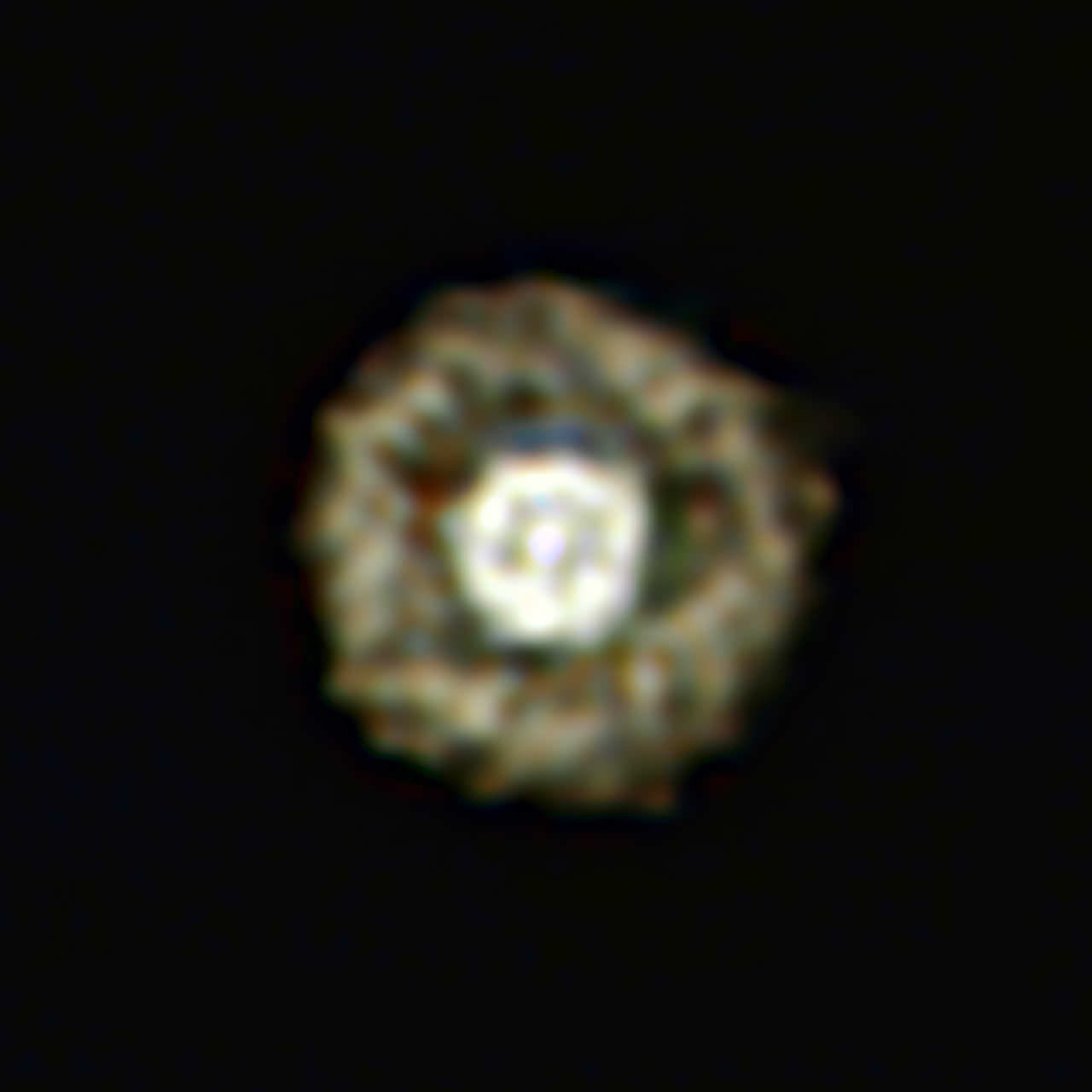[/caption]
A new look at the Fried Egg Nebula has revealed one of the rarest classes of stars in the Universe, a yellow hypergiant. This “sunny-side-up” view shows for the first time a huge dusty double shell surrounding this huge star.
“This object was known to glow brightly in the infrared but, surprisingly, nobody had identified it as a yellow hypergiant before,” said Eric Lagadec from the European Southern Observatory, who led the team that produced the new images.
And there’s good reason to keep an eye on this star: it will likely soon die an explosive death, and will be one of the next supernova explosions in our galaxy.
The monster star, IRAS 17163-3907 has a diameter about a thousand times bigger than our Sun. At a distance of about 13,000 light-years from Earth, it is the closest yellow hypergiant found to date and new observations show it shines some 500,000 times more brightly than the Sun. The total mass of this star is estimated to be roughly twenty times that of the Sun.
The star and its shells resemble an egg white around a yolky center, hence, the nickname of the Fried Egg Nebula – which is much easier to say than IRAS 17163-3907.
The observations of the star and the discovery of its surrounding shells were made using the VISIR infrared camera on the VLT. The pictures are the first of this object to clearly show the material around it and reveal two almost perfectly spherical shells.
Astronomers say that if the Fried Egg Nebula were placed in the center of the Solar System, Earth would lie deep within the star itself and the planet Jupiter would be orbiting just above its surface. The much larger surrounding nebula would engulf all the planets and dwarf planets and even some of the comets that orbit far beyond the orbit of Neptune. The outer shell has a radius of 10,000 times the distance from the Earth to the Sun.
Yellow hypergiants are in an extremely active phase of their evolution, undergoing a series of explosive events — this star has ejected four times the mass of the Sun in just a few hundred years. The material flung out during these bursts has formed the extensive double shell of the nebula, which is made of dust rich in silicates and mixed with gas.
Source: ESO

